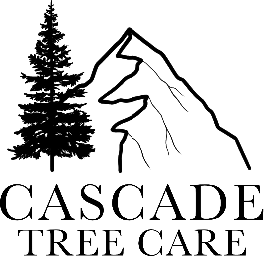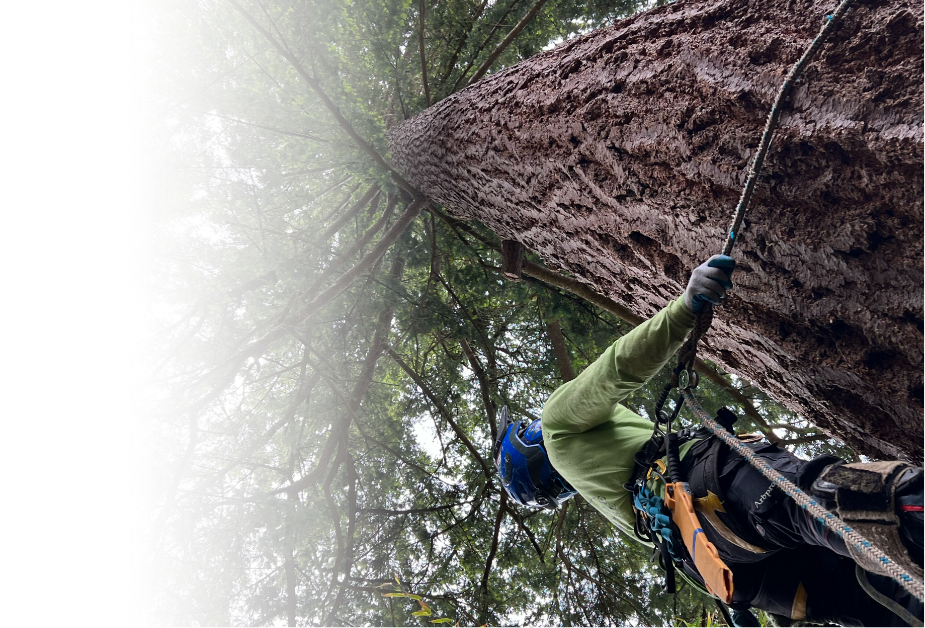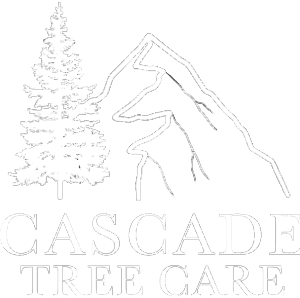Tree Stump Removal: What Every Homeowner Should Know?
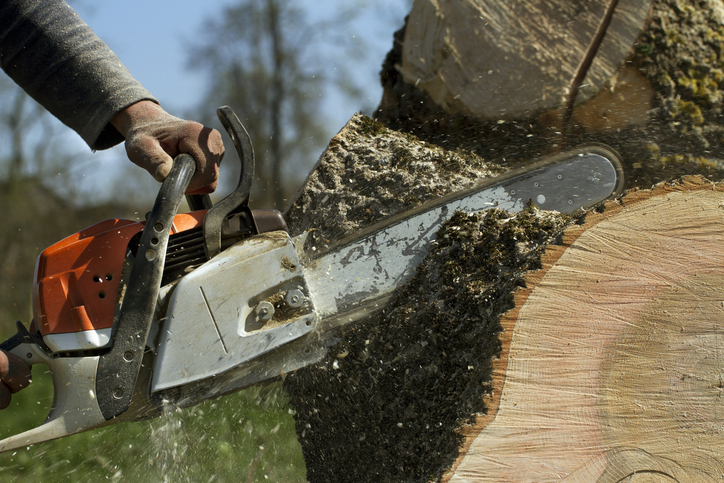
Introduction Removing tree stumps is often the final step in the tree removal process, yet it’s one that many homeowners overlook. A leftover stump may seem harmless at first, but over time, it can become an eyesore, a safety hazard, and even a breeding ground for pests and fungi. Whether you’ve recently had a tree taken down or have inherited old stumps in your yard, understanding your options for removal can help you reclaim the beauty and functionality of your outdoor space. In this guide, we’ll walk you through the essentials of stump removal, from identifying why it matters to evaluating tree stump removal methods so that you can make the best decision for your home and landscape. The Hidden Risks of Ignoring Tree Stumps 1. Why Stump Removal Matters: Leaving a tree stump in your yard can create more problems than it solves. Aside from diminishing curb appeal, stumps can become a tripping hazard for children and guests, especially when obscured by grass or leaves. Over time, the stump can also attract termites, ants, and fungi, which may spread to nearby plants or even your home. Additionally, some stumps may sprout new tree growth, leading to unwanted maintenance and recurring issues. Removing a stump not only improves the safety and aesthetics of your property but also ensures a cleaner slate for future landscaping or construction projects. 2. The Different Methods of Stump Removal: There are several approaches to removing a tree stump, each suited to different budgets, timelines, and property needs. Manual removal, using tools like a mattock, axe, and shovel, works well for smaller stumps but is labor-intensive. Chemical removal involves applying potassium nitrate to accelerate the decay process, which typically takes several weeks to complete. Stump grinding is one of the most popular professional methods, utilizing a powerful machine to shred the stump into wood chips. For larger properties or multiple stumps, excavation by heavy machinery might be required. The best method for your situation will depend on the size of the stump, its location, your physical capabilities, and whether you prefer a fast or gradual solution. 3. Pros and Cons of DIY Stump Removal: DIY stump removal can save money, especially if you already have the necessary tools and a small stump to work on. It can be a rewarding project for experienced homeowners who enjoy hands-on tasks. However, it’s not without risks and limitations. Manual removal can be exhausting and time-consuming, especially for larger or older stumps with deep root systems. Chemical solutions, although less strenuous, involve hazardous substances that must be handled carefully and kept out of the reach of children and pets. Additionally, the improper use of equipment, such as chainsaws or grinders, can pose serious safety hazards. Before committing to a DIY approach, consider your experience level, the tools available to you, and the scope of the task. 4. Benefits of Hiring a Professional: When it comes to stump removal, professionals offer efficiency, expertise, and peace of mind. Trained arborists or landscaping crews come equipped with specialized machines, such as stump grinders, which can remove even large, tough stumps quickly and safely. They can also assess the surrounding area to avoid damage to underground utilities or nearby structures. Hiring a professional often includes cleanup, leaving your yard in a tidy, usable condition. While the upfront cost may be higher than a DIY project, the reduced risk of injury, property damage, and lingering stump issues often makes it a worthwhile investment. Many companies also offer guarantees or insurance coverage, adding another layer of confidence for homeowners. 5. Cost Factors and What to Expect: The stump removal cost depends on several factors. Key considerations include the size and diameter of the stump, its accessibility, the chosen removal method, and local labor rates. On average, professional stump grinding can cost between $100 and $400 per stump, while complete excavation may run higher. If multiple stumps need removal, some companies offer volume discounts. DIY removal may cost less, particularly if you rent a grinder for a day, but expenses like tool rental, safety gear, and chemical agents can add up. Always request multiple quotes and check for hidden fees, such as debris removal or yard repair, when budgeting for the project. 6. How Long Does This Task Take? The timeline for stump removal depends heavily on the method used. Manual digging can take several hours or even multiple days for a large stump, depending on your tools and stamina. Chemical treatments are the slowest method, often requiring several weeks for the stump to soften and decay enough for easy removal. Stump grinding, performed by professionals, usually takes under an hour per stump and is the fastest and most efficient method for most situations. Full stump and root excavation may take longer, especially if the area needs to be backfilled or leveled afterward. Consider your schedule, urgency, and landscaping plans when selecting a removal method. 7. Preparing Your Yard Before and After Removal: Before removing a stump, it’s important to clear the area of rocks, debris, and plants that could obstruct machinery or tools. Mark any underground utilities by contacting your local utility locator service to avoid accidental damage during grinding or excavation. After the stump is removed, you’ll likely be left with a hole or depression where the roots once sat. Fill this with topsoil or compost and compact it to prevent settling. You can then seed the area with grass, plant new shrubs, or begin a new landscaping project. Proper yard preparation and restoration ensure the area remains safe, visually appealing, and ready for future use. 8. Preventing Regrowth and Pest Issues: Simply cutting down a tree does not guarantee that it won’t try to grow back. Some species, like poplar and maple, are notorious for sending up new shoots from the stump or surrounding roots. Using a stump grinder to remove as much of the root crown as possible can help minimize regrowth. Applying herbicides to the freshly cut stump or soil may
Why Stump Removal Is Essential for a Healthy Yard?
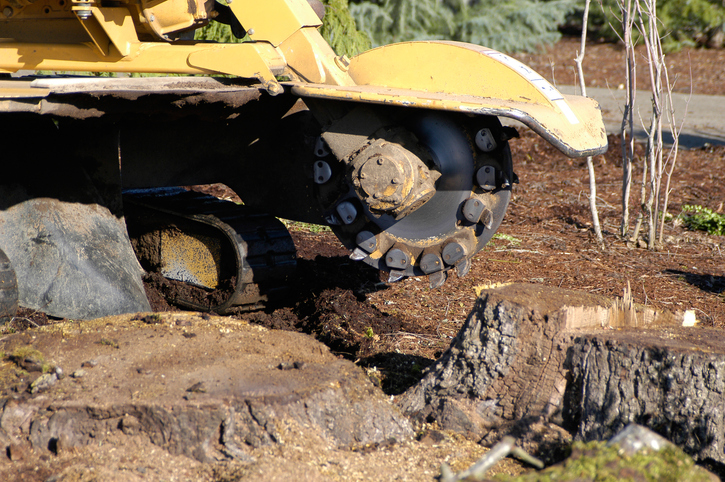
Introduction After a tree is cut down, the remaining stump may seem harmless or even rustic, but it can cause more trouble than you think. Many homeowners overlook the long-term impact of leaving stumps in their yards. Over time, stumps can harbor pests, promote decay, and even pose safety risks. What’s more, they can stunt new landscaping efforts and affect your property’s curb appeal. If you’re serious about keeping your yard healthy and well-maintained, stump removal in Bellevue WA, should be a top priority. Below, we explain why removing that leftover stump is more than just an aesthetic decision. Stump-Free Lawns Grow Stronger and Healthier 1. Prevents Pest Infestations: Tree stumps are ideal habitats for insects like termites, beetles, ants, and carpenter bees. As the stump rots, it becomes a food source and nesting site for these pests. Over time, they may migrate to nearby healthy trees, flowerbeds, or even your home’s foundation. Infestations can lead to expensive pest control treatments and home repairs. Removing the stump after the tree trimming near Bellevue WA, eliminates this breeding ground and reduces your risk of unwanted critters. 2. Stops Disease Spread: Old tree stumps can harbor fungi and diseases that may spread to nearby healthy trees and plants. Fungi, such as those causing root rot, can linger underground, infecting surrounding vegetation. If the tree was removed due to disease, the stump could still be a source of contamination. This unseen danger compromises your yard’s ecosystem. By removing the stump entirely, you eliminate the risk of continued spread and allow your garden to flourish. 3. Eliminates Safety Hazards: Tree stumps can be serious tripping risks, especially in family yards where children play or in areas with frequent foot traffic. They can also interfere with lawn equipment, such as mowers, increasing the risk of damage or accidents. During poor visibility conditions, such as dusk or snowfall, these stumps become nearly invisible obstacles. In some cases, they may even cause liability issues if someone gets injured. It creates a smoother, safer landscape for everyone. 4. Enhances Aesthetic Appeal: A clean, well-kept yard adds to your home’s curb appeal, but a decaying stump can be an eyesore. It disrupts the flow of your lawn and makes landscaping projects more difficult. Whether you’re planning new plantings, garden beds, or hardscape features, stumps can get in the way. Removing them opens up space and allows for more design freedom. A stump-free yard instantly looks more polished and well cared for. 5. Promotes Healthy Growth: Tree stumps can continue to sprout new shoots, drawing nutrients and water away from other plants in the area. These suckers often grow unevenly and can be difficult to remove later on. The presence of an old root system can also hinder the growth of new trees or garden installations. The process ensures that your yard’s resources go where they’re needed most. A clean slate promotes healthy, intentional planting and landscape development. Removing tree stumps isn’t just a cosmetic choice. It is a vital step in protecting your yard from pests, disease, and safety hazards. It helps maintain a healthy environment for your plants, allowing you to enjoy your outdoor space fully. With the stump gone, you’ll also have more flexibility for future landscaping improvements. Investing in removal today means fewer issues tomorrow. Keep your yard clean, safe, and thriving by taking action now. Conclusion Don’t let an old stump after the tree trimming near Redmond WA, compromise your landscape’s health and safety. Contact our specialists at Cascade Tree Services at 425-530-9697 and reclaim your yard with professional, efficient service you can trust. 📌We’re now Cascade Tree Care — same dependable team, same top-notch service, with a new name and renewed commitment. Experts in Fast, Reliable Stump Removal How Tree Removal Services Can Increase Your Property’s Value Best Tree Removal Advice to Avoid Costly Mistakes and Damages
Signs You Need Tree Stump Removal Sooner Than You Think
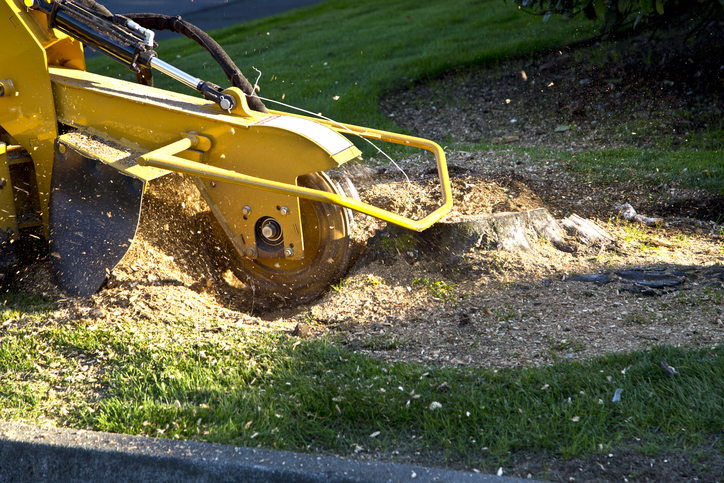
Introduction Tree stumps may seem harmless, but leaving them in your yard can lead to serious problems. Many homeowners overlook stumps after tree removal, assuming they’ll naturally decay over time. However, stumps often become more than just an eyesore—they attract pests, harbor fungi, and can even damage nearby landscaping. Ignoring a stump can affect your property’s curb appeal and safety. Recognizing the signs early helps you avoid costly repairs and maintain a healthier outdoor space. Here are five signs you need tree stump removal in Bothell WA, sooner than you think. Hidden Dangers Lurking in That Tree Stump 1. Pest Infestations Are on the Rise: If you’re noticing more insects, ants, or termites around your yard, your old tree stump might be the culprit. Rotting wood is a prime habitat for wood-boring insects that can eventually spread to your home. These pests can also attract animals like raccoons or snakes, increasing risks to your pets and family. Prompt stump removal helps eliminate these breeding grounds before infestations escalate. If left untreated, pest problems may require expensive extermination services down the line. 2. Fungal Growth Is Spreading: Mushrooms and other fungal growth around a stump indicate decay, and that decay can spread. These fungi may be toxic to pets and children and create slipping hazards when wet. Fungal spores can also affect nearby plants, weakening your landscape’s overall health. If you see consistent fungal activity, it’s time to remove the source. The sooner you act, the easier it is to contain the spread and protect your yard. 3. It’s Becoming a Tripping Hazard: Tree stumps and their exposed roots pose real dangers, especially in yards used by children or the elderly. A simple trip can lead to serious injury, liability, or damaged lawn equipment. Over time, roots can resurface and become more prominent, increasing the danger. The stump removal improves the usability and safety of your outdoor spaces. For families and active households, this is a clear reason to act quickly. 4. Regrowth from the Stump Is Occurring: If new shoots are sprouting from the stump or surrounding roots, it means the tree is trying to regenerate. These shoots are unsightly and require constant trimming to control. Worse, they can signal that the root system is still active and may interfere with underground utilities or other plants. Stump grinding or complete removal is often the only way to stop this cycle. Acting early prevents regrowth from becoming a recurring landscaping headache. 5. Your Lawn’s Aesthetic Is Suffering: A decaying stump can disrupt the beauty and uniformity of your lawn or garden. It limits your landscaping options and takes up space that could be used for new features. Visible rot, bark peeling, or hollow areas make your yard look unkempt. For homeowners considering property resale or outdoor upgrades, a lingering stump lowers curb appeal. Removing it restores the clean look and opens up space for new design opportunities. Tree stumps aren’t just unattractive—they can also create a host of problems that impact safety, health, and property value. From pests and fungi to regrowth and injury risks, these signs show when it’s time to act. Addressing a stump problem early can save you money and preserve your yard’s integrity. Don’t wait for the issues to grow out of control. Make your outdoor space safer, healthier, and more beautiful by investing in the tree removal cost in Bellevue WA. Conclusion Contact our experts at Cascade Tree Services for reliable tree trimming in Lynnwood WA. Call us at 425-530-9697 today to book an appointment. 📌Trusted team, fresh name! Cascade Tree Care delivers the expert service you count on — fast, reliable, and professional. Experts in Every Inch of Root Removal Tree Removal for Construction Projects: Key Considerations How Tree Removal Services Can Increase Your Property’s Value Best Tree Removal Strategies to Preserve Your Landscape Design
The Hidden Dangers of Ignoring Tree Stump Removal

Introduction Many homeowners think that once a tree is cut down, the job is done. However, leaving the stump behind can pose a variety of hidden dangers. From inviting pests to damaging your property’s aesthetics, a leftover tree stump is more than just an eyesore. While tree stump removal in Kirkland WA, may seem like an unnecessary expense, ignoring it can lead to long-term problems that cost far more. Whether you’re managing a small backyard or a large landscape, removing tree stumps is a critical step in responsible yard maintenance. Here’s why you shouldn’t overlook this task. Unremoved Stumps Can Harm Safety, Lawn, and Property 1. Pest Infestations and Termite Risk: Tree stumps left in the ground are a magnet for pests. As the wood decays, it attracts termites, ants, beetles, and other wood-boring insects. These pests don’t always stay in the stump—they can spread to healthy trees, shrubs, and even your home’s foundation. Insect infestations often go unnoticed until they cause real damage. Removing stumps reduces the chance of turning your yard into a breeding ground for destructive insects. 2. Regrowth and Unwanted Trees: A tree stump might look harmless, but it can often continue to sprout. These shoots can lead to the regrowth of the original tree, requiring repeated trimming or herbicide treatment. This regrowth can drain nutrients from nearby plants and create uneven landscaping. Over time, these sprouts may grow into weak trees with poor structure, increasing the risk of breakage. Proper stump removal eliminates this ongoing maintenance hassle. 3. Landscape Safety Hazards: Tree stumps can be dangerous, especially for children playing in the yard or for anyone mowing the lawn. Hidden beneath grass or debris, stumps become tripping hazards and can cause serious injuries. Lawn equipment can also be damaged when it collides with a hidden stump. These safety issues are entirely avoidable with timely stump removal. Eliminating stumps makes your yard safer for everyone. 4. Hindrance to Landscaping Projects: A leftover stump can limit your ability to use or redesign your outdoor space fully. Whether you plan to plant new trees, install a garden bed, or build a patio, a stump in the way complicates everything. Even underground roots can interfere with construction or planting. Ignoring stump removal can result in costly delays and adjustments to your landscaping plans. Clear ground is key to creative and functional yard upgrades. 5. Decreased Property Curb Appeal: A visible tree stump detracts from your home’s overall appearance. Even if your lawn is well-maintained, a rotting or overgrown stump gives an impression of neglect. This can affect the perception of your property and potentially lower its value. If you’re looking to sell, buyers may see the stump as an additional task and expense. Removing it instantly improves your property’s curb appeal. Leaving tree stumps behind may seem harmless at first, but the long-term risks outweigh the short-term savings. From pest invasions to safety concerns and reduced property value, the consequences can be costly. Removing stumps early prevents damage and keeps your landscape clean and safe. The tree trimming cost in Bellevue WA, is an investment in your home’s future and visual appeal. Don’t let a forgotten stump cause unexpected problems down the road. Conclusion Are you ready to schedule tree trimming in Edmonds WA? Contact our experienced professionals at Cascade Tree Services at 425-530-9697 for fast, professional tree services and reclaim your outdoor space with confidence. 📌 From trimming to removal, trust Cascade Tree Care for expert service done right — every tree, every time Rooted in Removal, Focused on Clean-Up How to Find the Best Tree Removal Services for Storm-Damaged Trees Best Tree Removal Advice to Avoid Costly Mistakes and Damages How Tree Removal Contractors Use Advanced Equipment Safely
The Environmental Benefits of Regular Tree Trimming
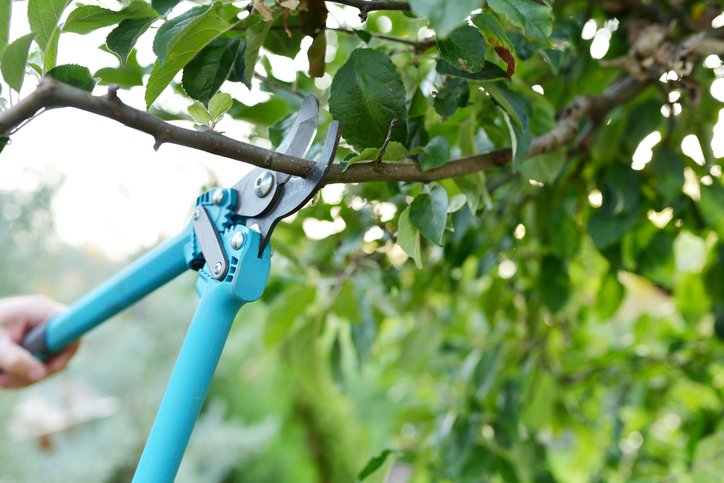
Introduction Trimming your trees isn’t just about keeping your yard tidy. It plays a vital role in protecting and enriching the environment. Regular maintenance encourages healthier growth, prevents disease, and supports a thriving ecosystem. It also reduces the risk of fallen branches and improves the overall aesthetics of urban and suburban landscapes. Environmentally, trimmed trees can help improve air quality and reduce stormwater runoff. Tree trimming in Redmond WA, supports biodiversity by encouraging a balanced habitat for birds, insects, and other wildlife. Let’s explore the environmental benefits of maintaining trees through routine trimming. Boost Tree Health & Environment with Regular Trimming 1. Improves Air Quality: Healthy trees absorb pollutants like carbon dioxide, sulfur dioxide, and nitrogen oxides, which helps purify the surrounding air. Trimming encourages healthier foliage and increased leaf surface area, boosting the tree’s ability to filter harmful particles. Dense, overgrown trees with dead or decaying branches are less efficient in processing carbon and pollutants. Regular trimming revitalizes the canopy, allowing better photosynthesis and air exchange. As a result, trimmed trees contribute more effectively to cleaner air and lower pollution levels in both urban and residential areas. 2. Enhances Tree Health and Longevity: Removing dead, diseased, or overcrowded branches allows trees to focus their energy on new, strong growth. This reduces the risk of pest infestations and fungal infections that can spread quickly through neglected limbs. A well-maintained tree is more resilient to extreme weather and environmental stress. Longer-living trees provide sustained environmental benefits like shade, cooling, and carbon absorption. Trimming helps each tree fulfill its potential in supporting the ecosystem over time. 3. Reduces Stormwater Runoff: Tree canopies intercept rainfall, slowing down water flow and reducing erosion and stormwater runoff. Overgrown or unbalanced trees may shed more limbs during storms, creating blockages in gutters and natural water pathways. Trimming improves the structure of the tree, ensuring branches grow in a way that maximizes rainwater absorption and dispersal. Healthier root systems can then better absorb water and filter pollutants before they reach streams and rivers. This natural filtration protects water quality and reduces the strain on local drainage systems. 4. Promotes Biodiversity: Trimming encourages a diversity of plant growth both on and around trees by allowing sunlight to penetrate lower vegetation. Open, healthy trees provide habitat for pollinators, nesting birds, and beneficial insects. Dead wood may house pests or invasive species, but removing it creates space for beneficial wildlife to thrive. By managing tree density, trimming fosters a balance between shade and sun, supporting a more vibrant landscape. This promotes ecological diversity and contributes to a stable, functioning environment. 5. Minimizes Environmental Hazards: Weak or dead branches are a safety risk, especially during storms or high winds, often damaging nearby plants and trees when they fall. Regular trimming keeps tree limbs secure and well-balanced, reducing the likelihood of unexpected breakage. This also prevents the spread of disease to the surrounding greenery by removing infected parts early. Safe, stable trees ensure that your landscape doesn’t pose a risk to people, wildlife, or property. In turn, well-maintained trees become reliable assets to the environment rather than hazards. Routine trimming has far-reaching environmental benefits that extend beyond curb appeal. It supports cleaner air, healthier trees, efficient water absorption, and stronger biodiversity. By proactively maintaining your trees, you also prevent potential environmental hazards. Every trimmed branch contributes to a more sustainable and balanced ecosystem. The tree cutting cost in Bellevue WA, will be a wise investment and a part of your environmental responsibility. Conclusion Are you ready to make a green impact with your landscape? Contact our expert arborists at Cascade Tree Services at 425-530-9697 for eco-friendly tree removal in Bothell WA, that supports your yard and the planet. 📌 Cascade Tree Care: Your trusted tree specialists. Fast, reliable, expert service tailored for every tree need you’ve always counted on. Call today! Trimming Today for a Greener Tomorrow Preventing Storm Damage: The Essential Role of Tree Trimming Sustainable Tree Trimming Practices for Eco Friendly Landscapes Tree Trimming Tips to Enhance Your Home’s Curb Appeal
DIY vs. Professional Tree Stump Removal: Which Is Right for You?
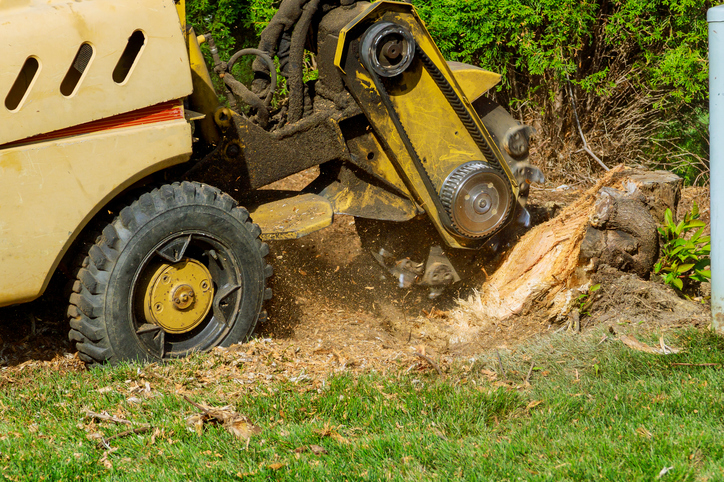
Introduction Stump elimination is often the final step after cutting down a tree, but it’s a task that many homeowners overlook. Left alone, stumps can become eyesores, attract pests, and even pose tripping hazards. While removing a stump may seem like a manageable DIY project, it’s not always that simple. The size of the stump, root depth, and the tools required can significantly impact your success. On the other hand, hiring a professional offers convenience but comes with a cost. This guide compares DIY and professional tree stump removal in Bellevue WA, so you can make the right choice for your yard and budget. DIY or Hire a Pro? Choose Your Stump Removal Path 1. Equipment and Tools Required: DIY stump removal typically involves basic tools like an axe, shovel, or chainsaw, and possibly renting a stump grinder. However, handling such equipment requires physical strength, safety gear, and a bit of experience. Mistakes with power tools can lead to injury or property damage. Professionals arrive with industrial-grade stump grinders and safety measures in place. Their advanced tools are faster and more effective than what’s usually available for rent or purchase. If you’re not comfortable operating machinery, a DIY approach may be risky. 2. Time and Labor Commitment: Removing a tree stump by yourself can be extremely time-consuming and physically demanding. Depending on the size of the stump, DIY removal can take several hours or even days. Digging out roots, grinding the stump, and clearing debris all require effort and stamina. Professionals, however, can complete the job in a fraction of the time, often within an hour. If you have a busy schedule or limited physical capability, professional removal might be more practical. 3. Cost Considerations: DIY stump removal is often chosen to save money. You can expect to spend around \$50–\$150 for renting a stump grinder, plus the cost of safety gear and fuel. In contrast, professional stump removal generally costs \$100–\$400 per stump, depending on its size and location. While DIY may be cheaper upfront, unforeseen costs from errors or tool rental extensions can add up. Factor in both time and money before deciding. 4. Safety and Environmental Risks: Improper stump removal can lead to injury or even damage to underground pipes or cables. Professionals know how to evaluate soil conditions and locate utility lines before beginning work. They also know how to dispose of mulch or debris in an environmentally responsible way. DIYers may not always consider these aspects, increasing the risk of injury or fines. If safety is a top concern, it’s wise to leave it to the experts. 5. Desired Results and Long-Term Impact: DIY stump removal may leave behind leftover roots or uneven ground if not done thoroughly. Professionals ensure the stump and its roots are completely removed, giving you a clean and level yard. This is especially important if you plan to replant or landscape the area. A proper job prevents regrowth and pest infestation. If aesthetics and functionality matter, professional removal offers peace of mind. Choosing between DIY and professional stump elimination depends on your budget, physical ability, and desired outcome. DIY may be cost-effective, but it requires time, tools, and effort. Likewise, professional tree pruning services in Bellevue WA, provide efficiency, safety, and better long-term results. Carefully weigh your options to make the best decision for your property. In the end, investing in the right solution saves both time and stress. Conclusion Do you need help deciding the best route for tree trimming in Kirkland WA? Contact our experienced team at Cascade Tree Services at 425-530-9697 for expert advice and a free, no-obligation estimate tailored to your yard’s needs. 📌 Same trusted team, now as Cascade Tree Care — delivering the fast, reliable tree service you know, with expert care and a new name! Say Goodbye to Stumps for Good How the Best Tree Removal Services Prevent Property Damage The Cost of the Best Tree Removal Services: What to Expect
How Crane-Assisted Tree Removal Works and Why It’s Highly Effective
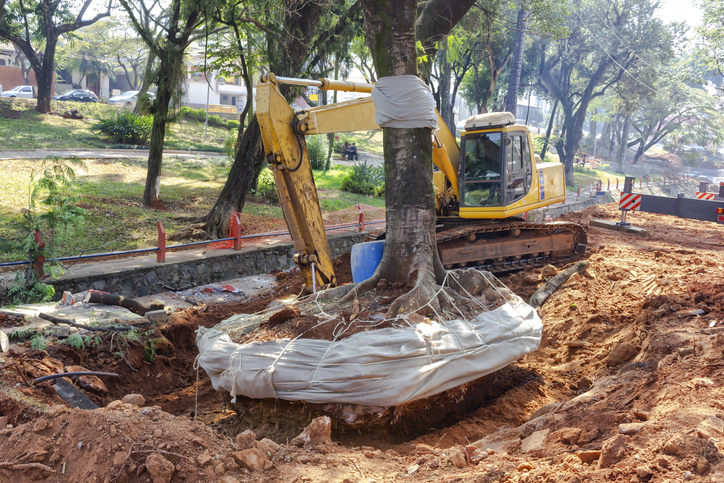
Tree removal can be a complex task, especially when dealing with large, diseased, storm-damaged, or dangerously positioned trees. Traditional tree removal methods may not always be practical or safe in these situations, especially near homes, power lines, or tight spaces. That’s where crane-aided tree dismantling comes into play. This technique involves using a crane to lift and remove tree sections in a controlled and secure manner. Not only does it speed up the removal process, but it also reduces the risks associated with manual climbing and cutting. In this article, we’ll explain how crane-assisted tree removal works, explore its benefits, and show why it’s one of the most effective methods for complex tree removals today. Step-by-Step: How the Crane Removal Process Works 1. What Is Crane-Based Tree Removal? Crane-based tree removal is a technique where a crane is used to lift and remove tree parts during the dismantling process. This approach is often necessary when trees are too large, too close to structures, or otherwise unsafe to be taken down using manual methods alone. The crane allows certified arborists to remove trees piece by piece from the top down, guiding each section safely to the ground or a landing zone. This method is ideal for minimizing damage to surrounding property and for safely accessing hard-to-reach or high-risk areas. 2. The Step-by-Step Process of Crane Tree Removal The process begins with a professional assessment of the tree and its surroundings to determine if crane use is necessary. Once approved, the crane is positioned in a stable location, and the operator works closely with the arborist in the tree. The arborist attaches straps or cables to a section of the tree, which is then cut and lifted away by the crane. The crane carefully lowers the piece to the ground crew, who processes it for hauling or chipping. This process is repeated until the entire tree is safely removed. Every step requires precision coordination to ensure safety and efficiency. 3. When is Crane-facilitated Tree Removal Necessary? Crane removal is essential when trees pose safety hazards or are inaccessible by standard equipment. This includes trees leaning dangerously over homes, growing in tight backyards, wedged between buildings, or structurally compromised by disease or storms. It’s also used when a tree is too tall to be removed safely from the ground or with climbers alone. In these situations, using a crane significantly reduces the risk of accidents, falling debris, and structural damage, making it a preferred method for difficult removals. 4. Key Benefits of Using a Crane for Tree Removal There are several advantages to crane-aided tree dismantling. First, it significantly increases safety for both workers and property owners by avoiding the need to drop large limbs or trunks freely. Second, it’s faster and more efficient, reducing labor costs and time on-site. Third, it minimizes property damage by precisely controlling where each tree segment is lowered. Fourth, it’s environmentally conscious by avoiding unnecessary disruption to the surrounding landscape, plants, and soil. Lastly, it gives arborists more control in hazardous conditions, making it suitable for emergency removals after storms. 5. Safety Protocols and Professional Expertise Required Operating a crane for tree removal requires both skill and certification. Only trained and experienced crane operators and certified arborists should perform crane-assisted removals. Safety protocols include pre-job site assessments, communication systems between the crane operator and the arborist, and using proper rigging and gear. The crew must also monitor weather conditions, crane load limits, and ground stability. This high level of expertise ensures that the job is completed without injury or property damage. Homeowners should always verify the credentials and insurance coverage of any company offering crane removal services. 6. Equipment Involved in Crane Tree Removal Besides the crane itself, several tools are essential for a successful crane-assisted removal. These include chainsaws, rigging systems (slings, ropes, blocks), helmets, harnesses, communication headsets, and often a chipper and hauling truck for debris. Cranes used for tree work usually have telescoping booms that provide reach and flexibility in positioning. Each tool and piece of equipment must be inspected before use to ensure safety. Proper equipment use also enhances the accuracy and speed of the operation, allowing arborists to perform clean cuts and secure lifts. 7. Costs Associated With Crane Tree Removal Tree removal using cranes is typically more expensive than standard removal due to the complexity, labor, and specialized equipment involved. Factors that affect cost include the size and location of the tree, difficulty of access, time required, and cleanup needs. In some cases, permits may be needed, which can also add to the cost. However, the benefits often outweigh the expense when compared to the risks of property damage or personal injury from attempting a dangerous removal without the proper tools. Homeowners should always request a detailed estimate and understand what’s included in the service. 8. Choosing the Right Crane Tree Removal Company When selecting a crane tree removal company, look for certifications from organizations like the International Society of Arboriculture (ISA), valid insurance, and positive customer reviews. Ask how many crane-assisted removals they’ve performed and whether they own or rent their cranes. Local knowledge also helps, as experienced providers understand area-specific risks such as local tree species and storm impacts. Make sure the team is willing to provide an on-site consultation and a detailed project plan. A transparent and communicative company is often a reliable one. Crane-assisted tree removal is an advanced technique that combines safety, precision, and efficiency to handle challenging tree removals. Whether you’re dealing with a massive tree leaning over your home or one damaged by a recent storm, this method allows for a faster, safer solution than traditional techniques. By understanding how the process works and when it’s needed, homeowners can make informed decisions that protect their property and their peace of mind. With the right team of certified professionals, even the most complex removals can be handled smoothly. Investing in crane tree removal isn’t just about taking down a tree—it’s about doing it the
How to Find the Best Tree Removal Services for Storm-Damaged Trees
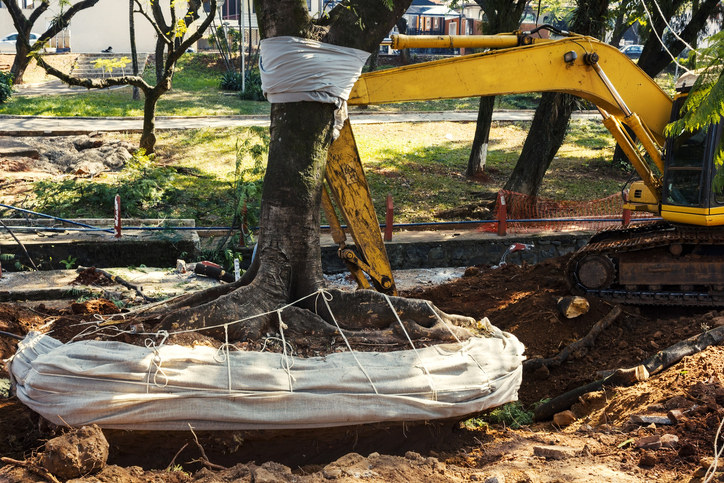
Introduction When trees are compromised by high winds, heavy rain, or lightning, they can pose serious hazards to your home and landscape. In these situations, it’s crucial to find professional tree removal services to ensure the safe and effective removal of damaged trees. Choosing the right tree removal company can help you avoid further property damage and potential safety risks. In this guide, we’ll explore how to identify the best tree removal in Bellevue, WA, for storm-damaged trees and the essential factors to consider when making your selection. What to Look for in a Tree Removal Company 1. Look for Experienced and Certified Arborists: One of the first things to consider when selecting a tree removal service is the experience and qualifications of the arborists. Certified arborists have undergone extensive training in tree care, safety, and removal techniques. They are equipped to handle complex tree removal situations, especially after a storm has left trees weakened or unstable. Hiring an experienced arborist ensures that the job will be completed safely, minimizing the risk of further damage to your property. Before hiring a company, ask to see certifications and proof of experience. 2. Check for Insurance Coverage and Licensing: Tree removal is a dangerous job, and accidents can happen. That’s why it’s essential to hire a tree removal service that has both the necessary licensing and comprehensive insurance coverage. A reputable company will have liability insurance and workers’ compensation to protect you in case of any mishaps during the removal process. Ensuring the company is licensed means they are following local regulations and meeting industry standards. Don’t hesitate to ask about insurance and licensing before committing to a tree removal service. 3. Assess the Company’s Reputation and Reviews: A company’s reputation conveys volumes about its quality. Check online reviews, testimonials, and ratings on platforms like Google, Yelp, or the Better Business Bureau (BBB) to gauge the company’s performance and customer satisfaction. Look for tree removal services that have positive feedback regarding their efficiency, professionalism, and ability to handle storm-damaged trees. You can also ask neighbors, friends, or family for recommendations if they’ve previously worked with tree removal companies in your area. 4. Get Multiple Quotes and Compare Pricing: Pricing for tree removal services can vary widely based on the extent of the damage, tree size, and job complexity. To understand the average tree cutting cost in Lynnwood, WA, it’s wise to get multiple quotes from different providers. Be cautious of quotes that seem too low, as they could signal poor service or hidden charges. Reputable companies offer transparent estimates, detailing every cost from removal to cleanup. Comparing quotes helps you strike the right balance between affordability and professional quality. Choosing the right tree removal service for storm-damaged trees is crucial for protecting your property and ensuring safety. Look for certified arborists with experience, ensure the company has proper insurance and licensing, check customer reviews, compare quotes, and verify the use of quality equipment. Don’t let storm damage pose a risk to your home—take action today and ensure your trees are properly managed. Conclusion Need help after a storm? Entrust your service with our experts at Cascade Tree Services at 425-530-9697 for the best tree removal in Bothell, WA, has to offer – fast, reliable, and safe storm-damaged tree solutions! 📌 Your Trusted Tree Specialists — Now Serving You as Cascade Tree Care with the Same Fast, Reliable Service You’ve Always Counted On — Now Focused on Expert Tree Service. Don’t Miss These Reads Essential Tips for Best Tree Removal and Fire Safety: Complete Guide Understanding Tree Removal Permits and Regulations: Process Budget Friendly Solutions: Tips for Affordable Tree Removal
Tree Trimming Services That Promote Healthy Tree Development
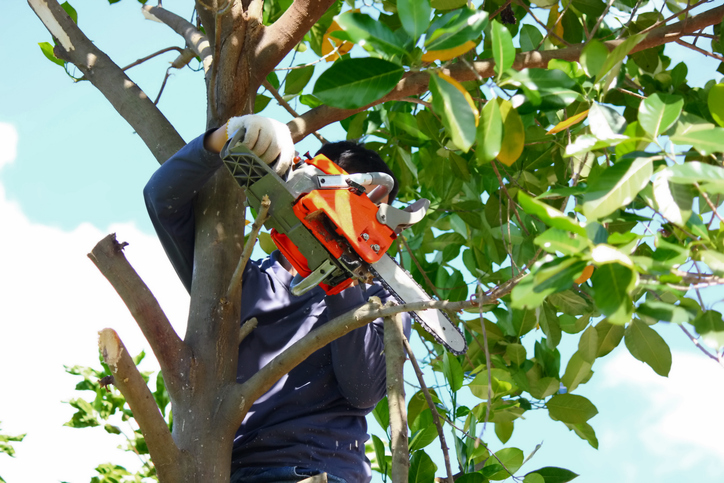
Introduction Regular tree cutting is an important aspect of maintaining the health and longevity of trees. Proper tree care can prevent disease, improve structural integrity, and ensure your trees grow strong and healthy for years to come. In this blog, we will explore how tree trimming in Bothell, WA, contributes to healthy tree development and why it’s a necessary practice for every tree owner. Removing Dead or Diseased Branches to Encourage Growth 1. Encouraging New Growth and Vitality: Tree maintenance encourages the development of new growth by removing dead, damaged, or diseased branches. This process helps ensure that your tree has enough resources to grow strong and resilient. By maintaining the tree’s structure, trimming enables better airflow and sunlight penetration, which also aids in photosynthesis and overall tree vitality. Regular trimming, therefore, promotes vigorous growth and enhances the tree’s ability to withstand environmental stressors. 2. Preventing Disease and Pest Infestations: One of the key benefits of tree upkeep is disease prevention. Decaying or dead branches are often a breeding ground for fungi, bacteria, and insects, which can spread infections and pests to other parts of the tree. Trimming helps to reduce the risk of disease and pest infestations, ensuring that your tree remains healthy and free from harmful organisms. A well-maintained tree is less likely to suffer from infections and pests that could otherwise damage or kill it. 3. Improving Tree Structure and Safety: Regular tree maintenance is essential for improving the structural integrity of a tree. Trimming helps to shape the tree and remove any branches that may be weak or improperly positioned. It also prevents the tree from becoming top-heavy or having weak spots that could break during storms or high winds. For safety reasons, tree shaping can reduce the risk of falling branches that could cause injury or property damage. 4. Enhancing Aesthetic Appeal and Landscape Value: Properly trimmed trees significantly improve the appearance of your landscape. Overgrown or untidy trees can detract from your property’s visual appeal. Whether you are looking to highlight the shape of the tree or maintain symmetry, regular trimming helps ensure that your trees complement your landscaping design. Additionally, well-maintained trees increase property value, as potential buyers appreciate the effort taken to care for the landscape. 5. Improving Air Circulation and Sunlight Exposure: Tree grooming helps improve air circulation and allows more sunlight to reach the inner parts of the tree. Improved sunlight exposure encourages healthy growth, while better airflow helps reduce moisture accumulation, which can lead to fungal diseases or mold. By trimming trees regularly, you allow them to breathe and thrive, ensuring that each part of the tree receives the resources it needs to stay healthy. Tree maintenance is an essential practice for promoting healthy tree development. Regular trimming also boosts the aesthetic appeal of your landscape, enhances air circulation, and protects your property from potential safety hazards. Don’t wait until overgrowth or damage occurs—invest in professional tree pruning services in Bellevue, WA, to keep your trees healthy and vibrant. With the right care, your trees will grow stronger and contribute to the beauty and value of your home. Conclusion Promote healthy tree development with expert trimming! Contact our team at Cascade Tree Services at 425-530-9697, your reliable tree cutting company in Bellevue, WA, for top-notch tree care. 📌 Your Trusted Tree Specialists — Now Serving You as Cascade Tree Care with the Same Fast, Reliable Service You’ve Always Counted On — Now Focused on Expert Tree Service. Don’t Miss These Reads Common Tree Trimming Mistakes and How to Avoid Them Tree Trimming Tips to Enhance Your Home’s Curb Appeal The Environmental Benefits of Tree Trimming and Tree Care Services
How Tree Pruning Helps Protect Your Roof and Gutters From Debris
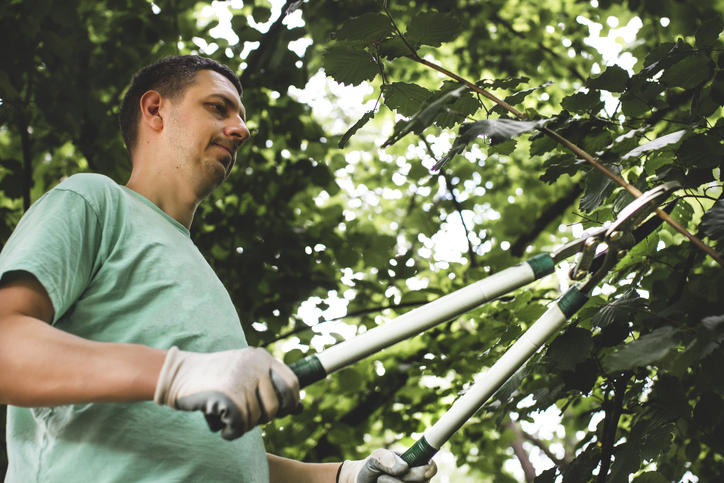
Introduction Regular tree trimming is not just about maintaining the aesthetic appeal of your yard; it also serves as an essential practice for safeguarding your home, particularly your roof and gutters. By pruning your trees correctly, you can reduce the risk of these problems while enhancing the overall health of your trees. In this post, we will explore how tree pruning in Bellevue, WA, can help protect your roof and gutters, ultimately saving you money and preventing unnecessary repairs. How Pruning Prevents Gutter Clogs and Water Overflow Preventing Gutter Clogs and Water Damage: One of the most direct benefits of tree cutting is preventing gutters from becoming clogged with leaves and twigs. Clogged gutters cause water to overflow, potentially leading to water damage along your roofline, fascia, and foundation. Regular pruning helps keep branches clear of the roof, allowing rainwater to flow freely through the gutters and away from your home. Minimizing Roof Damage From Overhanging Branches: Overhanging branches present a serious risk to your roof. High winds during storms can cause branches to scrape against the roofing material, leading to scratches, wear, and even structural damage. Furthermore, large branches could fall, resulting in holes or cracks on your roof. Pruning tree limbs too close to your roofline can prevent these dangers, helping to extend the life of your roof and protecting it from expensive repairs that far exceed the tree trimming cost in Bothell, WA. Reducing the Risk of Pests and Infestations: Unpruned trees can create a bridge for pests to invade your home. Regular pruning eliminates these pathways and makes it harder for pests to access your home, thus protecting your roof and gutters from infestations. A well-pruned tree can also discourage larger animals from attempting to nest on your roof. Improving Airflow and Sunlight for Better Drainage: Proper tree shaping helps improve airflow around your home and roof. When tree branches are too dense, they block sunlight from reaching your roof, which can lead to the accumulation of moisture. By trimming back the foliage, you allow sunlight and air to reach the roof, helping it dry out faster and preventing moss and mold growth. Better airflow and sunlight promote a cleaner, drier roof, reducing the chances of debris buildup. Preventing Larger Branches From Falling During Storms: During severe weather events, large, unpruned branches are more likely to break off and fall, often with damaging consequences. Regular tree upkeep ensures that weaker branches are removed before they have a chance to break and fall. By removing dead, damaged, or overly large branches, you reduce the likelihood of costly storm damage to your roof and gutters. Tree maintenance is a simple yet effective way to protect your roof and gutters from debris buildup and damage. Regular tree maintenance not only improves the health of your trees but also ensures the safety and functionality of your roofing system. Don’t wait for a storm to expose weak spots—prune your trees now to safeguard your home. Conclusion Protect your roof and gutters with expert tree care! Entrust your service with our experts at Cascade Tree Services at 425-530-9697 for professional tree removal contractors in Bellevue, WA. Safeguard your home today! 📌 Your Trusted Tree Specialists — Now Serving You as Cascade Tree Care with the Same Fast, Reliable Service You’ve Always Counted On — Now Focused on Expert Tree Service. Don’t Miss These Reads Understanding the Role of Tree Pruning in Storm Damage Prevention The Best Time of Year for Tree Pruning Services and Their Benefits The Impact of Tree Pruning on Flowering and Fruit Production
